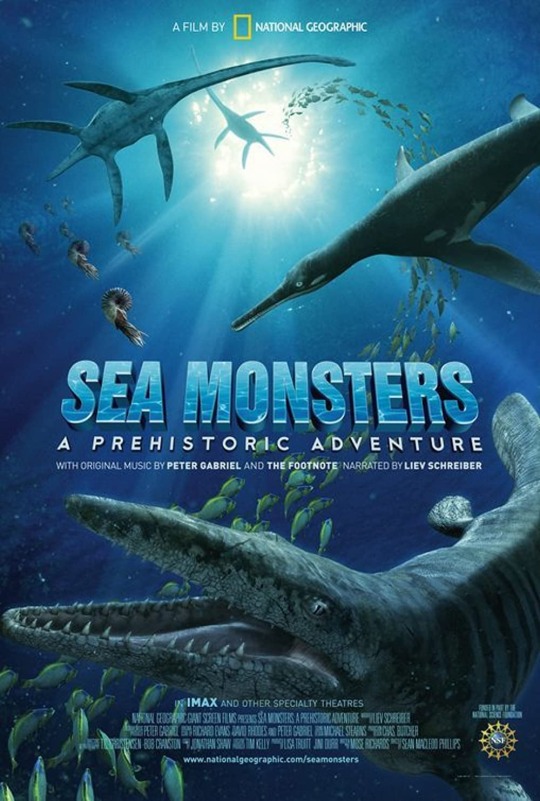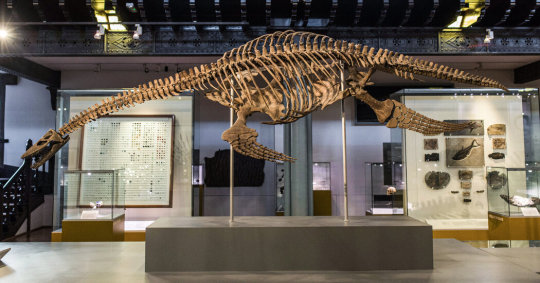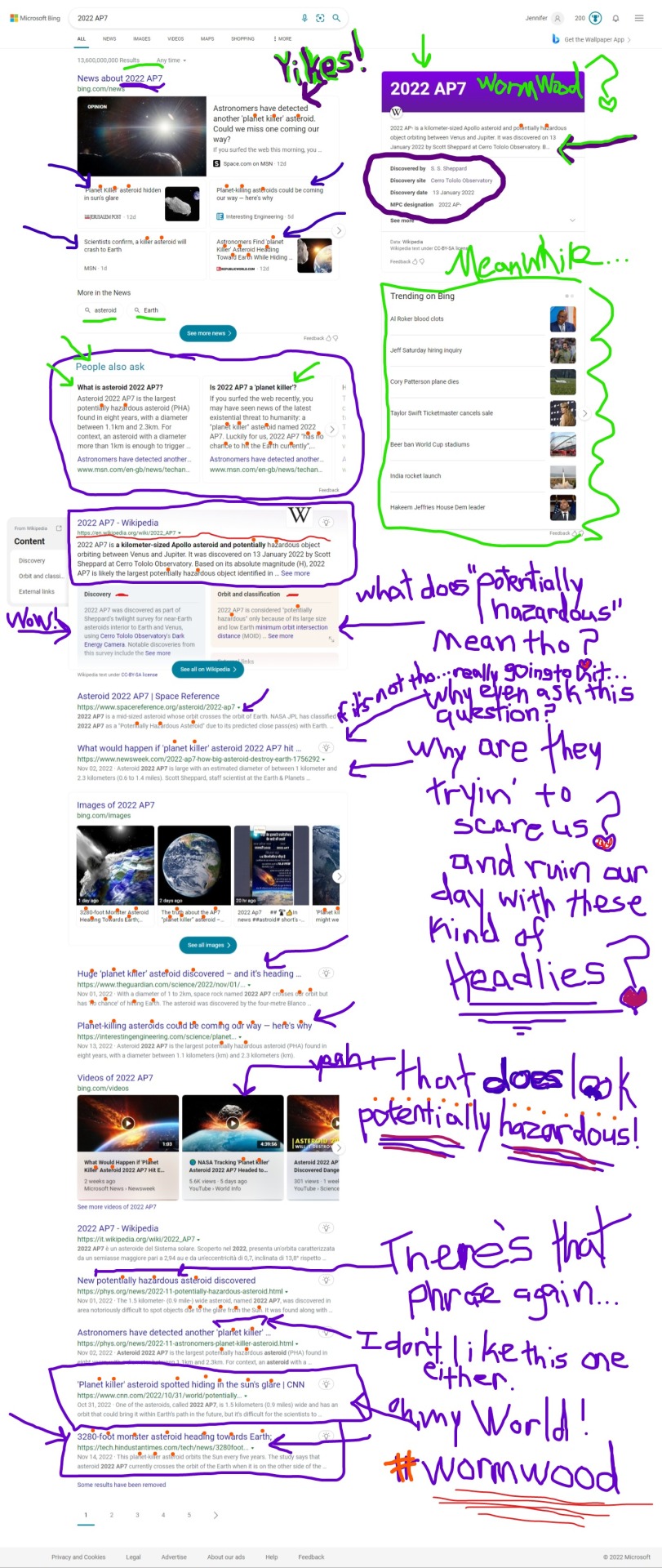#2022 Science News
Text
Sound reveals giant blue whales dance with the wind to find food
https://sciencespies.com/environment/sound-reveals-giant-blue-whales-dance-with-the-wind-to-find-food/
Sound reveals giant blue whales dance with the wind to find food
A study by MBARI researchers and their collaborators published today in Ecology Letters sheds new light on the movements of mysterious, endangered blue whales. The research team used a directional hydrophone on MBARI’s underwater observatory, integrated with other advanced technologies, to listen for the booming vocalizations of blue whales. They used these sounds to track the movements of blue whales and learned that these ocean giants respond to changes in the wind.
Along California’s Central Coast, spring and summer bring coastal upwelling. From March through July, seasonal winds push the top layer of water out to sea, allowing the cold water below to rise to the surface. The cooler, nutrient-rich water fuels blooms of tiny phytoplankton, jumpstarting the food web in Monterey Bay, from small shrimp-like krill all the way to giant whales. When the winds create an upwelling event, blue whales seek out the plumes of cooler water, where krill are most abundant. When upwelling stops, the whales move offshore into habitat that is transected by shipping lanes.
“This research and its underlying technologies are opening new windows into the complex, and beautiful, ecology of these endangered whales,” said John Ryan, a biological oceanographer at MBARI and lead author of this study. “These findings demonstrate a new resource for managers seeking ways to better protect blue whales and other species.”
The directional hydrophone is a specialized underwater microphone that records sounds and identifies the direction from which they originate. To use this technology to study blue whale movements, researchers needed to confirm that the hydrophone reliably tracked whales. This meant matching the acoustic bearings to a calling whale that was being tracked by GPS. With confidence in the acoustic methods established, the research team examined two years of acoustic tracking of the regional blue whale population.
This study built upon previous research led by MBARI Senior Scientist Kelly Benoit-Bird, which revealed that swarms of forage species — anchovies and krill — reacted to coastal upwelling. This time, researchers combined satellite and mooring data of upwelling conditions and echosounder data on krill aggregations with the acoustic tracks of foraging blue whales logged by the directional hydrophone.
“Previous work by the MBARI team found that when coastal upwelling was strongest, anchovies and krill formed dense swarms within upwelling plumes. Now, we’ve learned that blue whales track these dynamic plumes, where abundant food resources are available,” explained Ryan.
advertisement
Blue whales recognize when the wind is changing their habitat and identify places where upwelling aggregates their essential food — krill. For a massive animal weighing up to 150 tonnes (165 tons), finding these dense aggregations is a matter of survival.
While scientists have long recognized that blue whales seasonally occupy Monterey Bay during the upwelling season, this research has revealed that the whales closely track the upwelling process on a very fine scale of both space (kilometers) and time (days to weeks).
“Tracking many individual wild animals simultaneously is challenging in any ecosystem. This is especially difficult in the open ocean, which is often opaque to us as human observers,” said William Oestreich, previously a graduate student at Stanford University’s Hopkins Marine Station and now a postdoctoral fellow at MBARI. “Integration of technologies to measure these whales’ sounds enabled this important discovery about how groups of predators find food in a dynamic ocean. We’re excited about the future discoveries we can make by eavesdropping on blue whales and other noisy ocean animals.”
Background
Blue whales (Balaenoptera musculus) are the largest animals on Earth, but despite their large size, scientists still have many unanswered questions about their biology and ecology. These gentle giants seasonally gather in the Monterey Bay region to feed on small shrimp-like crustaceans called krill.
advertisement
Blue whales are elusive animals. They can travel large distances underwater very quickly, making them challenging to track. MBARI researchers and collaborators employed a novel technique for tracking blue whales — sound.
MBARI’s MARS (Monterey Accelerated Research System) observatory offers a platform for studying the ocean in new ways. Funded by the National Science Foundation, the cabled observatory provides continuous power and data connectivity to support a variety of instruments for scientific experiments.
In 2015, MBARI researchers installed a hydrophone, or underwater microphone, on the observatory. The trove of acoustic data from the hydrophone has provided important insights into the ocean soundscape, from the migratory and feeding behaviors of blue whales to the impact of noise from human activities.
In 2019, MBARI and the Naval Postgraduate School installed a second hydrophone on the observatory. The directional hydrophone gives the direction from which a sound originated. This information can reveal spatial patterns for sounds underwater, identifying where sounds came from. By tracking the blue whales’ B call — the most powerful and prevalent vocalization among the regional blue whale population — researchers could follow the movements of individual whales as they foraged within the region.
Researchers compared the directional hydrophone’s recordings to data logged by tags that scientists from Stanford University had previously deployed on blue whales. Validating this new acoustic tracking method opens new opportunities for simultaneously logging the movements of multiple whales. It may also enable animal-borne tag research by helping researchers find whales to tag. “The integrated suite of technologies demonstrated in this paper represents a transformative tool kit for interdisciplinary research and mesoscale ecosystem monitoring that can be deployed at scale throughout protected marine habitats. This is a game changer and brings both cetacean biology and biological oceanography to the next level,” said Jeremy Goldbogen, an associate professor at Stanford University’s Hopkins Marine Station and a coauthor of the study.
This new methodology has implications not only for understanding how whales interact with their environment and one another but also for advancing management and conservation.
Despite protections, blue whales remain endangered, primarily from the risk of collisions with ships. This study showed that blue whales in Monterey Bay National Marine Sanctuary regularly occupy habitat transected by shipping lanes. Acoustic tracking of whales may provide real-time information for resource managers to mitigate risk, for example, through vessel speed reduction or rerouting during critical periods. “These kinds of integrated tools could allow us to spatially and temporally monitor, and eventually even predict, ephemeral biological hotspots. This promises to be a watershed advancement in the adaptive management of risks for protected and endangered species,” said Brandon Southall, president and senior scientist for Southall Environmental Associates Inc. and a coauthor of the research study.
Support for this research was provided by the David and Lucile Packard Foundation. The National Science Foundation funded the installation and maintenance of the MARS cabled observatory through awards 0739828 and 1114794. Directional acoustic processing work was supported by the Office of Naval Research, Code 32. Tag work was funded in part by the National Science Foundation (IOS-1656676), the Office of Naval Research (N000141612477), and a Terman Fellowship from Stanford University.
#Environment
#10-2022 Science News#2022 Science News#acts of science#Earth Environment#earth science#Environment and Nature#everyday items#Nature Science#New#News Science Spies#October 2022 Science News#Our Nature#planetary science#production line#sci_evergreen1#Science#Science Channel#science documentary#Science News#Science Spies#Science Spies News#Space Physics & Nature#Space Science#Environment
36 notes
·
View notes
Text

#not so recent—from 2022#but still good news that i just learned about that will have big impacts!#good news#science#environmentalism#nature#environment#animals#conservation#dogs#hero dogs#penguins#invasive species#ecology#animal protection#animal death /#Macquarie Island#birds
40 notes
·
View notes
Text
Animal of the Day!
Beluga Whale (Delphinapterus leucas)

(Photo from Orlando News)
Conservation Status- Least Concern
Habitat- Arctic Ocean; Northern Pacific Ocean; Northern Atlantic Ocean
Size (Weight/Length)- 1360 kg; 5 m
Diet- Squid; Crustaceans; Octopus; Fish
Cool Facts- The sea canary that is the beluga whale will always put a smile on my face. With thick blubber to help survive freezing temperatures, the beluga’s most iconic feature is their melon head. Within their melon is an echolocation organ. By producing sounds that are more similar to a bird than a whale, beluga whales can find anything from schools of fish to breathing holes in meter thick ice. Belugas live in groups ranging anywhere from ten individuals to hundreds, including other species of whale and porpoise that are adopted into the pod. Constant play is a must. Belugas play catch with each other using wood and will pop bubbles that other belugas blow.
Rating- 13/10 (Not a whale, not a porpoise, more closely related to narwhals.)
Requested by @inewt
#Animal of the day#Animals#Mammals#Whales#Porpoise#Marine animals#Saturday#December 31#Beluga whale#biology#science#conservation#the more you know#new years eve#goodbye 2022#hello 2023
327 notes
·
View notes
Text

Mom says it’s my turn to inflict news upon the masses with this format
#nuclear#nuclear fusion#science#breakthrough#news#world news#festival#supernatural#spn#spnfamily#spnedit#incorrect spn quotes#election#2022#sometimes it do just be#fuck#art#huh#high#yes#lmao#holy shit#bill nye
191 notes
·
View notes
Text
Greenhouse gas emissions should be subject to legal controls in the US and phased out under the Toxic Substances Control Act, according to a group of scientists and former public officials, in a novel approach to the climate crisis.
“Using the TSCA would be one small step for [the Us President] Joe Biden, but potentially a giant leap for humankind – as a first step towards making the polluters pay,” said James Hansen, a former NASA scientist, who is a member of the group alongside Donn Viviani, a retired 35-year veteran of the Environmental Protection Agency (EPA).
Their legal submission, filed to the EPA on Thursday, states that greenhouse gas emissions present a danger to the climate and should be regulated as such under the Toxic Substances Control Act (TSCA), a law passed in 1976 as part of a suite of environmental regulations in the US.
The TSCA, which was amended in 2016, allows the EPA to place monitoring requirements on companies and enforce strict controls on certain substances. It has been used to restrict chemicals including asbestos, lead in paint, and polychlorinated biphenyls (PCBs).
The law covers substances that pose “an unreasonable risk of injury to health or the environment”. The petitioners believe it can be interpreted to allow for a phase-out of greenhouse gas emissions.
Viviani said: “TSCA is like the ruby slippers [in The Wizard of Oz] – it can do just about anything. It can allow you to put a levy on carbon, and can deal with the legacy of carbon emissions. It has nearly international reach, as the US is the biggest market in the world and could apply these measures to imports too.”
He and the other petitioners have filed “a mountain’s worth” of scientific studies showing the impact of greenhouse gases on weather, which results in wildfires, heatwaves, severe drought, rising sea levels and increasingly acidified oceans.
The US has a recent history of attempts to regulate carbon dioxide under existing environmental legislation, as Congress has often proved reluctant to consider passing laws to curb greenhouse gas emissions.
The former president, Barack Obama, who was unable to get his climate legislation through the Republican-dominated Congress, tried to use the Clean Air Act – another of the environmental achievements of the 1970s – to regulate carbon dioxide emissions from power stations, but under Donald Trump the attempt was reversed.
The US Supreme Court, which has a strong Republican bias, is re-examining whether the EPA should have such carbon-regulating powers.
Viviani has also tried a similar tack before, submitting a legal petition in 2015 for carbon dioxide to be controlled under the TSCA to tackle ocean acidification. That failed, but he believes that the amendment to the legislation in 2016 offers a fresh basis on which to present the argument again.
Hansen said the new attempt was more likely to succeed, adding: “The TSCA is different. It’s better than the Clean Air Act (CAA). The CAA was a possible vehicle for a rising carbon fee, because the supreme court in Massachusetts vs EPA ruled that CO2 was a pollutant. However, there is a very strong suspicion that if the CAA is used that way, the present conservative supreme court will reverse that ruling. They can’t do that easily with the TSCA, which was passed by Congress and reaffirmed [in 2016] with bipartisan support.”
Alongside Viviani and Hansen, the other petitioners include: Lise Van Susteren, a professor of psychiatry and behavioural sciences at George Washington University; John Birks, an emeritus professor in atmospheric chemistry at the University of Colorado Boulder; Richard Heede, of the Climate Accountability Institute; and the Climate Protection and Restoration Initiative.
Some climate campaigners have criticised Biden for a perceived lack of action on the climate crisis, despite the fact that he made it a priority in the early days of his presidency. The war in Ukraine and rising energy prices have prompted the White House to emphasise new gas extraction as an alternative to Russian supplies.
Viviani said: “President Biden is an empathic man; we hope he is also a brave man. We hope he will use both his empathy and bravery to pick up this tool he has in the TSCA, and use it to give hope that a solution will be found to the many millions of young people, and in fact all of us.”
Under the TSCA, the EPA has 90 days to consider and act upon the legal petition. The Guardian contacted the EPA for comment.
#us politics#news#the guardian#2022#president joe biden#biden administration#environmental protection agency#Toxic Substances Control Act#James Hansen#Donn Viviani#Clean Air Act#president barack obama#greenhouse gasses#green energy#climate crisis#climate emergency#climate reform#global warming#science#trust the science
117 notes
·
View notes
Text
Nuclear Power Renaissance with Molten Salts - Technology Org
New Post has been published on https://thedigitalinsider.com/nuclear-power-renaissance-with-molten-salts-technology-org/
Nuclear Power Renaissance with Molten Salts - Technology Org
A science team is reinventing nuclear energy systems via molten salt technologies.
A retro wonder gleaming white in the sun, propelled by six rear-facing rotors and four jet engines affixed to the longest wings ever produced for a combat aircraft, the Convair B-36 Peacemaker looks like it flew right out of a 1950s science fiction magazine.
Frozen uranium containing fuel salt (NaF-BeF2-UF4), inside a glovebox in Raluca Scarlat’s SALT lab. Illustration by Sasha Kennedy/UC Berkeley
One of these bombers, which flew over the American Southwest from 1955 to 1957, was unique. It bore the fan-like symbol for ionizing radiation on its tail. The NB-36H prototype was designed to be powered by a molten salt nuclear reactor — a lightweight alternative to a water-cooled reactor.
Nuclear-propelled aircraft like the NB-36H were intended to fly for weeks or months without stopping, landing only when the crew ran short of food and supplies. So what happened? Why weren’t the skies filled with these fantastical aircraft?
“The problem was that nuclear-powered airplanes are absolutely crazy,” says Per F. Peterson, the William S. Floyd and Jean McCallum Floyd Chair in Nuclear Engineering. “The program was canceled, but the large thermal power to low-weight ratio in molten salt reactors is the reason that they remain interesting today.”
Because of numerous concerns, including possible radioactive contamination in the event of a crash, the idea of nuclear-powered aircraft never took off. But nuclear submarines, using water as coolant, completely replaced their combustion-powered predecessors. Civilian reactors were built on the success of submarine systems, and as a result, most nuclear reactors today are cooled with water.
Professor Per Peterson holds a single fuel pebble, which can produce enough electricity to power a Tesla Model 3 for 44,000 miles. Illustration by Adam Lau / Berkeley Engineering
While most water-cooled reactors can safely and reliably generate carbon-free electricity for decades, they do present numerous challenges in terms of upfront cost and efficiency.
Molten salt reactors, like those first designed for nuclear-powered aircraft, address many of the inherent challenges with water-cooled reactors. The high-temperature reaction of such reactors could potentially generate much more energy than water-cooled reactors, hastening efforts to phase out fossil fuels.
Now, at the Department of Nuclear Engineering, multiple researchers, including Peterson, are working to revisit and reinvent molten salt technologies, paving the way for advanced nuclear energy systems that are safer, more efficient and cost-effective — and may be a key for realizing a carbon-free future.
Smaller, safer reactors
In the basement of Etcheverry Hall, there’s a two-inch-thick steel door that looks like it might belong on a bank vault. These days, the door is mostly left open, but for two decades it was the portal between the university and the Berkeley Research Reactor, used mainly for training. In 1966, the reactor first achieved a steady-state of nuclear fission.
Fission occurs when the nucleus of an atom absorbs a neutron and breaks apart, transforming itself into lighter elements. Radioactive elements like uranium naturally release neutrons, and a nuclear reactor harnesses that process.
Concentrated radioactive elements interact with neutrons, splitting themselves apart, shooting more neutrons around and splitting more atoms. This self-sustaining chain reaction releases immense amounts of energy in the form of radiation and heat. The heat is transferred to water that propels steam turbines that generate electricity.
The reactor in Etcheverry Hall is long gone, but the gymnasium-sized room now houses experiments designed to test cooling and control systems for molten salt reactors. Peterson demonstrated one of these experiments in August. The Compact Integral Effects Test (CIET) is a 30-foot-tall steel tower packed with twisting pipes.
The apparatus uses heat transfer oil to model the circulation of molten salt coolant between a reactor core and its heat exchange system. CIET is contributing extensively to the development of passive safety systems for nuclear reactors.
After a fission reaction is shut down, such systems allow for the removal of residual heat caused by radioactive decay of fission products without any electrical power — one of the main safety features of molten salt reactors.
The first molten salt reactor tested at Oak Ridge National Laboratory in the 1950s was small enough to fit in an airplane, and the new designs being developed today are not much larger.
Conventional water-cooled reactors are comparatively immense — the energy-generating portion of the Diablo Canyon Power Plant in San Luis Obispo County occupies approximately 12 acres, and containment of feedwater is not the only reason why.
The core temperature in this type of reactor is usually kept at some 300 degrees Celsius, which requires 140 atmospheres of pressure to keep the water liquid. This need to pressurize the coolant means that the reactor must be built with robust, thick-walled materials, increasing both size and cost. Molten salts don’t require pressurization because they boil at much higher temperatures.
In conventional reactors, water coolant can boil away in an accident, potentially causing the nuclear fuel to meltdown and damage the reactor. Because the boiling point of molten salts are higher than the operational temperature of the reactor, meltdowns are extremely unlikely.
Even in the event of an accident, the molten salt would continue to remove heat without any need for electrical power to cycle the coolant — a requirement in conventional reactors.
“Molten salts, because they can’t boil away, are intrinsically appealing, which is why they’re emerging as one of the most important technologies in the field of nuclear energy,” says Peterson.
The big prize: efficiency
Assistant professor Raluca Scarlat uses a glovebox in her Etcheverry Hall lab. Illustration by Adam Lau / Berkeley Engineering
To fully grasp the potential benefits of molten salts, one has to visit the labs of the SALT Research Group. Raluca O. Scarlat, assistant professor of nuclear engineering, is the principal investigator for the group’s many molten salt studies.
Scarlat’s lab is filled with transparent gloveboxes filled with argon gas. Inside these gloveboxes, Scarlat works with many types of molten salts, including FLiBe, a mixture of beryllium and lithium fluoride. Her team aims to understand exactly how this variety of salt might be altered by exposure to a nuclear reactor core.
On the same day that Peterson demonstrated the CIET test, researchers in the SALT lab were investigating how much tritium (a byproduct of fission) beryllium fluoride could absorb.
Salts are ionic compounds, meaning that they contain elements that have lost electrons and other elements that have gained electrons, resulting in a substance that carries no net electric charge. Ionic compounds are very complex and very stable. They can absorb a large range of radioactive elements.
This changes considerations around nuclear waste, especially if the radioactive fuel is dissolved into the molten salt. Waste products could be electrochemically separated from the molten salts, reducing waste volumes and conditioning the waste for geologic disposal.
Waste might not even be the proper term for some of these byproducts, as many are useful for other applications — like tritium, which is a fuel for fusion reactors.
Salts can also absorb a lot of heat. FLiBe remains liquid between approximately 460 degrees and 1460 degrees Celsius. The higher operating temperature of molten salt coolant means more steam generation and more electricity, greatly increasing the efficiency of the reactor, and for Scarlat, efficiency is the big prize.
“If we filled the Campanile with coal and burned it to create electricity, a corresponding volume of uranium fuel would be the size of a tennis ball,” says Scarlat. “Having hope that we can decarbonize and decrease some of the geopolitical issues that come from fossil fuel exploration is very exciting.”
“Finding good compromises”
Thermal efficiency refers to the amount of useful energy produced by a system as compared with the heat put into it. A combustion engine achieves about 20% thermal efficiency. A conventional water-cooled nuclear reactor generally achieves about 32%.
According to Massimiliano Fratoni, Xenel Distinguished Associate Professor in the Department of Nuclear Engineering, a high-temperature, molten salt reactor might achieve 45% thermal efficiency.
So, with all the potential benefits of molten salt reactors, why weren’t they widely adopted years ago? According to Peter Hosemann, Professor and Ernest S. Kuh Chair in Engineering, there’s a significant challenge inherent in molten salt reactors: identifying materials that can withstand contact with the salt.
Anyone who’s driven regularly in a region with icy roads has probably seen trucks and cars with ragged holes eaten in the metal around the wheel wells. Salt spread on roads to melt ice is highly corrosive to metal. A small amount of moisture in the salt coolant of a nuclear reactor could cause similar corrosion, and when combined with extreme heat and high radiation, getting the salt’s chemistry right is even more critical.
Hosemann, a materials scientist, uses electron microscopes to magnify metal samples by about a million times. The samples have been corroded and or irradiated, and Hosemann studies how such damage alters their structures and properties. These experiments may help reactor designers estimate how much corrosion to expect every year in a molten salt reactor housing.
Hosemann says molten salt reactors present special engineering challenges because the salt coolant freezes well above room-temperatures, meaning that repairs must either be done at high temperatures, or the coolant must first be drained.
Commercially successful molten salt reactors then will have to be very reliable, and that won’t be simple. For example, molten salt reactors with liquid fuel may be appealing in terms of waste management, but they also add impurities into the salt that make it more corrosive.
Liquid fuel designs will need to be more robust to counter corrosion, resulting in higher costs, and the radioactive coolant presents further maintenance challenges.
Nuclear engineering graduate students Sasha Kennedy and Nathanael Gardner, from left, work with molten salt. Illustration by Adam Lau/Berkeley Engineering
“Good engineering is always a process of finding good compromises. Even the molten salt reactor, as beautiful as it is, has to make compromises,” says Hosemann.
Peterson thinks the compromise is in making molten salt reactors modular. He was the principal investigator on the Department of Energy-funded Integrated Research Project that conducted molten salt reactor experiments from 2012 to 2018.
His research was spun off into Kairos Power, which he co-founded with Berkeley Engineering alums Edward Blandford (Ph.D.’10 NE) and Mike Laufer (Ph.D.’13 NE), and where Peterson serves as Chief Nuclear Officer.
The U.S. Nuclear Regulatory Commission just completed a review of Kairos Power’s application for a demonstration reactor, Hermes, as a proof of concept. Peterson says that high-temperature parts of Kairos Power’s reactors would likely last for 15 to 25 years before they’d need to be replaced, and because the replacement parts will be lighter than those of conventional reactors, they’ll consume fewer resources.
“As soon as you’re forced to make these high-temperature components replaceable, you’re systematically able to improve them. You’re building improvements, replacing the old parts
and testing the new ones, iteratively getting better and better,” says Peterson.
Lowering energy costs
California is committed to reaching net zero carbon emissions by 2045. It’s tempting to assume that this goal can be reached with renewables alone, but electricity demand doesn’t follow peak energy generating times for renewables.
Natural gas power surges in the evenings as renewable energy wanes. Even optimistic studies on swift renewable energy adoption in California still assume that some 10% of energy requirements won’t be achieved with renewables and storage alone.
Considering the increasing risks to infrastructure in California from wildfires and intensifying storms, it’s likely that non-renewable energy sources will still be needed to meet the state’s energy needs.
Engineers in the Department of Nuclear Engineering expect that nuclear reactors will make more sense than natural gas for future non-renewable energy needs because they produce carbon-free energy at a lower cost. In 2022, the price of natural gas in the United States fluctuated from around $2 to $9 per million BTUs.
Peterson notes that energy from nuclear fuel currently costs about 50 cents per million BTUs. If new reactors can be designed with high intrinsic safety and lower construction and operating costs, nuclear energy might be even more affordable.
Molten salt sits on a microscope stage in professor Raluca Scarlat’s lab. Illustration by Adam Lau/Berkeley Engineering
Even if molten salt reactors do not end up replacing natural gas, Hosemann says the research will still prove valuable. He points to other large-scale scientific and engineering endeavors like fusion reactors, which in 60 years of development have never been used commercially but have led to other breakthroughs.
“Do I think we’ll have fusion-generated power in our homes in the next five years? Absolutely not. But it’s still valuable because it drives development of superconductors, plasmas and our understanding of materials in extreme environments, which today get used in MRI systems and semiconductor manufacturing,” says Hosemann. “Who knows what we’ll find as we study molten salt reactors?”
Source: UC Berkeley
You can offer your link to a page which is relevant to the topic of this post.
#000#2022#aircraft#airplanes#applications#atom#atoms#boiling#bombers#Building#carbon#carbon emissions#Cars#challenge#chemistry#Chemistry & materials science news#coal#construction#contamination#control systems#cooling#corrosion#crash#designers#development#effects#efficiency#electrical power#electricity#electron
3 notes
·
View notes
Text

#Avatar: The Way of Water#Avatar The Way of Water#Avatar 2#Avatar#sequel#James Cameron#director#filmmaker#cgi#motion capture#sci-fi#science fantasy#action#adventure#2022#movie#new trailer#trailer 2#trailer#new poster#poster#blockbuster#entertainment#franchise#IMAX#3D#2D#cinema
21 notes
·
View notes
Text










National Dinosaur Day
#walking with dinosaurs#dinosaur planet#prehistoric planet#prehistoric planet 2022#Sea Monster A Prehistoric Adventure#When Dinosaurs Roamed America#Allosaurus: A Walking with Dinosaurs#The Mystery Dinosaur#Dinosaurs : Return to life ?#T. REX: NEW SCIENCE NEW BEAST#national dinosaur day#dinosaur
53 notes
·
View notes
Text
Fossil Find Tantalizes Loch Ness Monster Fans
https://sciencespies.com/news/fossil-find-tantalizes-loch-ness-monster-fans/
Fossil Find Tantalizes Loch Ness Monster Fans

Plesiosaurs went extinct 66 million years ago, but evidence that the long-necked reptiles lived in freshwater, not just oceans, has offered hope to Nessie enthusiasts.
LONDON — Millions of years before the first (alleged) sighting of the Loch Ness monster, populations of giant reptiles swam through Jurassic seas in areas that are now Britain. Known as plesiosaurs, these long-necked creatures were thought to have dwelled exclusively in oceans.
But a discovery published in a paper last week by researchers in Britain and Morocco added weight to a hypothesis that some Loch Ness monster enthusiasts have long clung to: that plesiosaurs lived not just in seas, but in freshwater, too. That could mean, they reasoned excitedly, that Nessie, who is sometimes described as looking a lot like a plesiosaur, really could live in Loch Ness, a freshwater lake.
Local papers have celebrated the finding. It “gives further credit to the idea that Nessie may have been able to survive and even thrive in Loch Ness,” said an article on page 32 of the Inverness Courrier, a biweekly newspaper in the Scottish Highlands. “Loch Ness Monster bombshell,” blared a headline from Britain’s Daily Express tabloid. “Existence of Loch Ness Monster is ‘plausible’” read headlines in The Scotsman, The Telegraph and elsewhere, seizing on a phrase in the University of Bath’s announcement of the study’s findings.
This is not the first study to find that plesiosaurs lived in freshwater. “This new study is simply providing additional evidence for certain members of this group living in freshwater,” said Dean Lomax, a paleontologist and visiting scientist at the University of Manchester. “We’ve always known this.”
But Nick Longrich, the lead author of the study, said his team had one of the stronger cases for it because they found fossils of 12 plesiosaurs, proof that it was not just one plesiosaur that wandered into freshwater and then died there.
“The more plesiosaur fossils discovered in freshwater environments, the more this will further build the picture to explain why plesiosaurs might be turning up in freshwater environments around the world,” said Georgina Bunker, a student who was a co-author of the paper.
Dr. Longrich, a paleontologist and evolutionary biologist at the University of Bath, said it was “completely unexpected” to find the fossil of a plesiosaur that had lived in an 100-million-year-old freshwater river system that is now the Sahara.
While on a research trip to Morocco, he was sifting through a box in the back room of a shop when he spotted a “kind of chunky” bone, which turned out to be the arm of a five-foot long baby plesiosaur. Dr. Longrich paid the cashier no more than 200 Moroccan Dirham, or about $20, after bargaining to bring down the price, and brought the fossils back to Britain for further study.
Nick Longrich/University of Bath
“Once we started looking, the plesiosaur started turning up everywhere,” he said. “It reminds you there’s a lot we don’t know.” (The fossils will be returned to museums in Morocco at a later date, he said.)
As the news of the study made headlines last week, some Nessie fans were hopeful. George Edwards, who was for years the skipper of a Loch Ness tourism boat called the Nessie Hunter, said that for him the new study showed how creatures could adapt to survive in new environments — and that the world is full of mysteries. Take the coelacanth, a bony fish that was thought to have become extinct millions of years ago but was found in 1938 by a South African museum curator on a fishing trawler. “Lo and behold, they found them, alive and kicking,” Mr. Edwards said. “Anything is possible.”
Mr. Edwards said he had seen unexplained creatures in Loch Ness plenty of times: “There’s got to be a family of them.” From what he has seen, the creatures have a big arched back, no fins and are somewhat reminiscent of a plesiosaur.
But there is one detail that some Nessie lovers may have overlooked in their embrace of the plausibility of Nessie’s existence: Plesiosaurs became extinct at the same time as dinosaurs did, some 66 million of years ago. Loch Ness was only formed about 10,000 years ago, and before that it was ice.
Valentin Fischer, an associate professor of paleontology at the University of Liège in Belgium, said that it would currently be impossible for a marine reptile like the plesiosaur to live in Loch Ness.
Nick Longrich/University of Bath
The first recorded sighting of Nessie dates back to the sixth century A.D., when the Irish monk St. Columba was said to have driven a creature into the water. But global interest was revived in the 20th century, after a British surgeon, Col. Robert Wilson, took what became the most famous photo of the Loch Ness monster in 1934. Sixty years later, the photograph was revealed to be a hoax.
But some people were not discouraged, and, ever since, throngs of tourists have traveled to Loch Ness each year in hopes of seeing the monster.
There have been more than 1,100 sightings at Loch Ness, including four this year, according to the register of official sightings.
A famous photograph of the Loch Ness Monster taken in 1934 was later revealed to have been a hoax.Keystone/Getty Images
Steve Feltham, a full-time monster hunter who has lived on the shores of Loch Ness for three decades, said the British-Moroccan study was interesting, but that it was irrelevant to his search. Ever since it became clear that the famous 1934 photo of Nessie was fake, he has stopped believing that Nessie was a plesiosaur. Plesiosaurs have to come up for air, so he figures he would have seen it during the 12 hours a day that he scans the loch. Instead, he scans the water for giant fish that look like a boat turned upside down.
“I struggle to think of any bona fide Nessie hunter that still believes in the plesiosaur,” he said. “The hunt has moved on from that.”
#News
#2022 Science News#8-2022 Science News#acts of science#August 2022 Science News#Earth Environment#earth science#Environment and Nature#everyday items#Nature Science#New#News Science Spies#Our Nature#planetary science#production line#sci_evergreen1#Science#Science Channel#science documentary#Science News#Science Spies#Science Spies News#Space Physics & Nature#Space Science#News
38 notes
·
View notes
Text
Video 📹 from E! News Glambot, 94th Academy Awards, 27 March 2022
Remember… There are shortcuts to happiness, and dancing is one of them. — Vicki Baum
#Tait rhymes with hat#Good times#Belfast#Awards#Academy of Motion Picture Arts and Sciences#AMPAS#94th#Academy Awards#Oscars#Dolby Theatre#27 March 2022#Los Angeles California USA#E! News#Glambot#My screenrecording#Campaign To Shorten Awards Season
8 notes
·
View notes
Text
the moons new red fit is looking fire rn
#Eclipse#lunar eclipse#the moon is my friend and it’s got a new red dress on#Science#this is the coolest I love it#Moon#lunar#2022#lunar eclipse 2022#lunar eclipse may 15
41 notes
·
View notes
Text
2022 AP7 ???

Notice how this entire webpage states the phrases "planet killer" asteroid and "potentially hazardous" threat a lot more than they do "it has no chance of hitting earth" hmmm #curious #signs #2022
#everything you need to know about 2022 AP7#news#science#world#earth#life#time#universe#information#link#article#today#now#bing#MSN#pop culture#mainstream
12 notes
·
View notes
Text
#teampug 💜
PUG reps all the wholesomeness humanity needs to see in 2023!!!
Pug is for everybody! 😍

#PUG#teampug#youNme#THUP#PUP#teamslay#power up points#peace under God#you and me#the human unity project#2022#2023#new book#new story#original story#scifi#science fiction#fantasy#epic adventure#epic#adventure#new novel#new in 2022
12 notes
·
View notes
Text
I was toying around with the idea of vampirism as a sort of autoimmune disorder the other day, but the idea won't really work for MR.
It's making me want to write a collection of related short stories in the "fictional non-fiction" genre, basically just a modern fantasy doctor writing patient notes for a bunch of different illnesses like vampirism, lycanthropy, what have you.
#I think I would have to write this while back in school for biology#I don't have the expertise needed to brainstorm this level of science-fiction right now#which is reason number 1 this won't work for MR#but the other reason is that we barely understand immune disorders in 2022 let alone 1922#and I would have to change a lot of plot details to shift blood from a nutritional need to an immunological one#anyway just a fun new WIP idea to store away for 5 years until viable#hashtag just writer things
7 notes
·
View notes
Text
After vaccines became available, a partisan gap in deaths emerged
Analysis by Philip Bump
There are times when correlation really seems as though it is obviously representative of causation. Some set of data lines up so neatly that it’s hard to escape reaching an obvious conclusion. This can be dangerous, certainly, but usually it’s simply because the data are causally related. A plus B seems to equal C because it does.
An example of this is the overlap of COVID-19 deaths since 2020 and partisanship. Last month, I reviewed the evolution of the pandemic, assessing where fatality from the virus was sharpest. Even in the era of omicron — a moment when we’re dealing with a less-deadly virus and have better vaccines and treatment to address it — there is a noticeable gap between Democratic- and Republican-voting places, just as there has been for months.
The word “places” is important there. What we could produce was analyses like the one below, showing how Florida and Ohio counties that voted for President Donald Trump in 2020 had higher rates of death, month after month, than ones that voted for Joe Biden. That didn’t necessarily mean that more Trump voters were dying, just that places where more of them lived saw higher fatality rates.

(In mid-2021, Florida briefly stopped reporting county-level death tolls.)
Why might it be the case that places with more Trump voters saw more deaths?
Well, we know that many of those who died of the virus last year were unvaccinated. The Kaiser Family Foundation estimates that about 234,000 deaths from June 2021 through March 2022 could have been prevented had the decedents been vaccinated against the virus. That protection, too, held into the omicron era.
We also know that Republicans were less likely to get vaccinated than Democrats. Republican officials often downplayed the utility of vaccination, responding to framing of the shots as an unnecessary intrusion from the government. Trump-voting counties were also more likely to seek alternative treatments for COVID, such as the drug ivermectin — treatments that were shown repeatedly not to be effective.
All of this, though, was correlation. We couldn’t say that more Republicans were dying, specifically, so the link to partisanship was indirect, however clearly rational an assumption it might have been.
Last month, though, the National Bureau of Economic Research published an important study from researchers affiliated with Yale University. They took 577,659 death records from Ohio and Florida between January 2018 and December 2021 and matched the decedents to a 2017 voter file. In other words, they were able to identify the partisanship not only of the places those people lived but of the people themselves.
What they found is that the rate of excess death — that is, deaths above the expected toll relative to the pre-pandemic baseline — was higher for Republicans, particularly after vaccines were rolled out.
“Registered Republicans in Florida and Ohio had higher excess death rates than registered Democrats, driven by a large mortality gap in the period after all adults were eligible for vaccines,” the researchers write. “These results adjust for county-by-age differences in excess deaths during the pandemic, suggesting that there were within-age-by-county differences in excess death associated with political party affiliation.”
You can see that on charts included in the report. Democrats and Republicans in Ohio and Florida died at higher rates than would have been expected based on 2018 patterns. But Republicans were much more likely to do so, particularly after the second dark, vertical line on the graph — the point at which all adults became eligible for vaccines.

In another chart, the point is made explicitly. Before the vaccines, the pattern of deaths during the pandemic looked the same for Democrats and Republicans, even in counties that would later have lower vaccination rates. Then, after vaccinations became available, the divergence emerged — and was much wider in counties with lower vaccination rates.

This is something else we knew, too: Counties that backed Trump more heavily in 2020 had lower vaccination rates. In other words, there was a separate correlation between vaccination rates and Trump support. If we separate out the counties in Ohio and Florida that backed Trump by a margin of at least 40 points and those that backed him by a narrower margin, we see another separation.
More-Trump-supportive places had higher death rates than less-Trump-supportive ones during peaks in the pandemic, and both had higher death rates than Biden-supportive ones.

“The results suggest that the well-documented differences in vaccination attitudes and reported uptake between Republicans and Democrats have already had serious consequences for the severity and trajectory of the pandemic in the United States,” the researchers conclude. “If these differences in vaccination by political party affiliation persist, then the higher excess death rate among Republicans is likely to continue through the subsequent stages of the COVID-19 pandemic” — exactly as we’ve seen in county voting data.
Sometimes correlation is causation.
#us politics#news#analysis#the washington post#philip bump#covidー19#coronavirus#coronavirus pandemic#coronavirus vaccine#Republicans#Democrats#donald trump#president joe biden#2022#statistics#graphs#science#trust the science#death rate#get the vaccine#wear a mask
52 notes
·
View notes
Text


Stay pUg~dated at jdslayton.com 💜
#pug#team pug#world of pug#pug's world#farside#starside#novel#novella#new#2022#pug the novel#pug the novella#epic adventure#original story#science fiction#fiction#fictional#original#art#design
11 notes
·
View notes